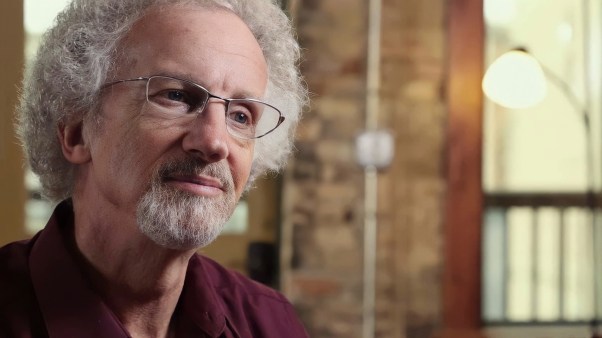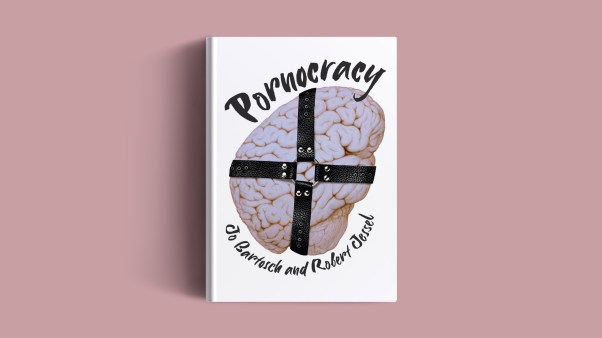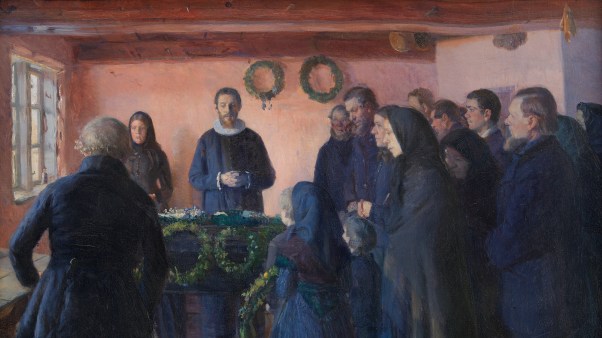When our girls were moving through secondary school, my wife and I began taking weekly strolls about the neighborhood, loading this midweek hour with conversations about scheduling, money, and parenting challenges.
We thought this to be pretty good child-rearing practice; routine talks increased the chances we were handling our kids in a similar, or at least complementary, fashion. For us, training up children in “the way they should go” (Prov. 22:6) included making observations about goals, friendships, and behavior, then responding with prayerful deliberation. One consistent challenge: reaching consensus about which TV shows, books, and movies were appropriate at each developmental stage.
During this period, we met another couple who was certain that godly parenting necessitated drastic measures to prevent cultural contagion. Within a year, they moved from the Central Coast of California to rural Idaho with the express purpose of erecting walls around their children’s minds. They believed public schools and popular media pushed too many dangerous ideas to risk further delay. Instead of wrestling with endless questions about the spiritual impact of new books and shows, they opted to step out of the ring altogether.
Was a cloistered life what my own family should have been pursuing if we took seriously the admonition to “set your minds on things above, not on earthly things” (Col. 3:2), to think about what is honorable, just, and pure (Phil. 4:8)?
My wife and I decided that the discernment necessary to “see the distinction between the righteous and the wicked, between those who serve God and those who do not” (Mal. 3:18) required encountering a wide array of fictional situations. Scriptural narrative provided a foundation for our kids, and both faith-informed and secular tales built upon that foundation by elaborating the consequences of embracing or ignoring Christian teaching. As a family, we read aloud, reserved time to watch shows and films together, and engaged in dinnertime exegesis.
Some choices were easy. Mister Rogers winsomely illustrated the power of loving those marginalized by disability or race, VeggieTales songs on a loop taught lessons about selflessness, and conflict-driven episodes of Little House on the Prairie dramatized situations in which virtues could transform the villainous. Our own love of 19th-century classics meant our daughters heard Jane Austen’s Emma while working on handstands in the garage, and I read Charles Dickens’s Hard Times and Charlotte Brontë’s Jane Eyre en route to distant gymnastics meets and vacation destinations. These novels, together with titles like Little Women and Anne of Green Gables, provided opportunities to discuss both healthy and destructive responses to fear, loneliness, and loss.
Other choices proved more difficult.
I discovered superhero comics in late elementary school and collected Marvel and DC titles well into adulthood, and I wanted to share my passion with the girls while they had time to immerse themselves. But aware that superheroes often resolve disagreements with violence, my wife was wary. How might Wonder Woman’s use of force influence a daughter faced with a recalcitrant sister? We started withholding superhero cartoons for a week when one of our kids pushed or pinched her sibling soon enough after watching a show to suggest a connection.
Were we playing with fire? Did knocking adversaries into little pieces in the Lego Batman video game, watching animated Teen Titans pummel their adversaries, and reading colored panels in which the Uncanny X-Men killed hostile extraterrestrials foster aggression in our girls? Were there any benefits to exploring this type of story? Why not confine our kids to tales with grounded, relatable characters in everyday situations, and history with its verifiable truths?
The Christian authors of The Fellowship of the Ring, The Lion, the Witch, and the Wardrobe, and A Wrinkle in Time each contend that fantasy provides valuable opportunities for readers young and old, opportunities to deepen understanding of a God whose unfathomable love and ineffable nature transcend logic’s efforts to measure and categorize. Though none of the three wrote or celebrated comic books, their central claims about fantasy apply well to the thematically complex superhero myths that have evolved over the last century.
Like the fairy tales J. R. R. Tolkien classes as a type of mythopoeia, tales about caped heroes open us to divine possibility. Fictional superhumans prime the imagination to apprehend an omnipotence that bends and breaks the physical laws that fantasy regularly suspends. In a poem written to a doubting C. S. Lewis in 1931, J. R. R. Tolkien affirms that “God made” and “Evil is,” truths he claims sub-creators (writers) validate whenever they “[sow] the seeds of dragons” or describe stars as “living silver that sudden burst / to flame like flowers.” As Tolkien writes elsewhere, by ensuring that recovery and consolation follow great suffering, fantasy also anticipates the truly joyous ending the Gospels promise.
Lewis stopped tiptoeing around his love of fantasy once he realized imagination could extend logic’s finite vision of reality. In fact, he stepped into fantasy’s current at the same time he plunged into the saving depths of belief. Removing mythopoeia from children’s lives, he later observed in “On Three Ways of Writing for Children,” removes an opportunity to counter fear with hope. Beside the “terrible figures” in such tales, fantasy sets up the “immemorial comforters and protectors, the radiant ones.”
Madeleine L’Engle rounds out this trio of writers confident that fantasy provides an effective springboard for an “assurance of things hoped for” though unseen (Heb. 11:1, ESV). In the autobiographical Walking on Water, she holds that fiction of all kinds opens us to possibilities we might otherwise ignore, like our potential to “respond more courageously and openly” to whatever challenges we face. Fantasy fiction offers to take us still further, she attests, drawing away from the secular world’s “dirty devices” and moving toward a vaster reality “interested not in limited laboratory proofs but in truth.”
L’Engle and her fellows recognize that scientific empiricism, useful for identifying material likelihoods, cannot validate truths that elude quantification. The same limit applies to stories that toe a scientific line. The historical novel and realistic film demand that we consider the plausibility of their representation, forcing us to dismiss or apply their conclusions—with crucial emotional consequences for ourselves. If we decide that a particular tale is authentic but far removed from our daily lives, we may experience a painful sympathy—as when watching soldiers caught in a hail of bullets at Normandy—but emerge relieved by the distance that time and space provide.
Superhero films aren’t limited by “laboratory proofs” or concerns about applicability. Instead, they nurture virtue conceptually in children. The incredible situations of these movies discourage practical deliberations while encouraging flights of inspiring fancy. Like a seedling removed to a greenhouse to stimulate growth far from the stressors of hostile bugs and extreme weather, a virtue cultivated in the safely imaginary can grow to ample size before returning to its native environment.
Most superheroes, breathing the rarified air of ideals uncomplicated by political pragmatism, model this inattention to the conventions that slow and complicate virtuous action in the real world. Batman does not ask Commissioner Gordon to vet his strategy for taking down Carmine Falcone before Batman tackles the mob boss in his lair. Captain Marvel does not run her plan of action by Congress before stopping an alien invasion. Both possess a simple, uncomplicated desire to save as many lives as quickly as possible.
In James Gunn’s recent Superman, reporter Lois Lane questions why our hero intervened to stop a land war on the far side of the globe without first conferring with either the US president or the secretary of defense. A delayed response, he observes, would have cost lives: “People were going to die!” Instead of allowing himself to grow numb to statistics about disasters, he considers the opportunity to prevent hundreds of deaths a mandate and acts.
The superheroes my imagination soared with as a kid shared this moral clarity. Superman’s willingness to confront villains grew my own notion of courage well before I had to face bullies in the locker room or defend a minority position in a fraught department meeting. The telepath Professor X, capable of reading and controlling others’ minds, usually entered another’s mind only when invited or when doing so would prevent tragedy. This exercise of patience, gentleness, and self-control (Gal. 5:22–23) provided the nascent professor in me with important lessons about the influence a teacher can wield.
Spider-Man’s mantra, “With great power comes great responsibility,” distills the ethos of many a superhero whose selflessness proves as extraordinary as their special abilities. As a teenager, I absorbed the absurd beauty of loving one’s enemies (Matt. 5:44) the more readily because the X-Men, mutants with unsettling powers, repeatedly put themselves in danger to save the very bigots persecuting them. In Marvel Studios’ recent films, the Hulk saves the general determined to capture and weaponize him, Captain America rescues Bucky Barnes even as the brainwashed friend tries to kill him, and Shang-Chi spares the father who considers his own son’s life disposable.
In Jake Schreier’s Thunderbolts, the morose Yelena Belova sets aside deep bitterness and grief to help a man whose own private darkness threatens to destroy her along with the rest of the world. That she lost her youth to training as an assassin, a calamity few of us can begin to comprehend, does not make risking her life to help someone threatening her the less inspiring. Belova’s transformation invites viewers of all ages to consider whether fixation on their own troubles may sabotage a capacity to give and receive love.
And though the most saintly sacrifice of a life (let alone a fictional one) can only distantly echo Christ’s salvific act on the cross, superheroes who give their lives help seed the imagination to embrace the incomprehensible. In The Fantastic Four: First Steps, Matt Shakman conveys this principle of loving sacrifice in possibly the most optimistic, family-friendly superhero film ever made. (Yes, even more uplifting than The Incredibles.)
Shakman floods his ’60s-era, alternative Earth with a joie de vivre that somehow avoids becoming saccharine. Bright lighting and a cool color palette join good-natured humor and a surprising forthrightness absent from more cynical superhero movies. When the team fails to solve a problem endangering the planet, they admit their failure to an expectant crowd that cheered their return only moments earlier. Instead of prevaricating, Reed Richards unhesitatingly shares details sure to turn the world against them. They admit declining to sacrifice one of their own in a utilitarian exchange that would have saved the entire planet.
As it turns out, however, a blood sacrifice is necessary, and three different characters step willingly toward the altar. This, I think, is one of the most valuable gifts superhero tales can grant to children trained by an anxious society to think first about their own well-being: the greatest form of love involves giving life itself for another (John 15:13).
Will kids learn from such stories that physical force can destroy as well as protect? Most definitely, and we can pray they never have to deliver or receive violence themselves. Even if our kids never face such situations, having imagined the beauty of sacrifice will prepare them to renounce their lives in other ways and to appreciate more fully the one surrender that saves them.
Paul Marchbanks is a professor of English at California Polytechnic State University. His YouTube channel is “Digging in the Dirt.”




















